Juliet & Daisy – Artists & Independent Women
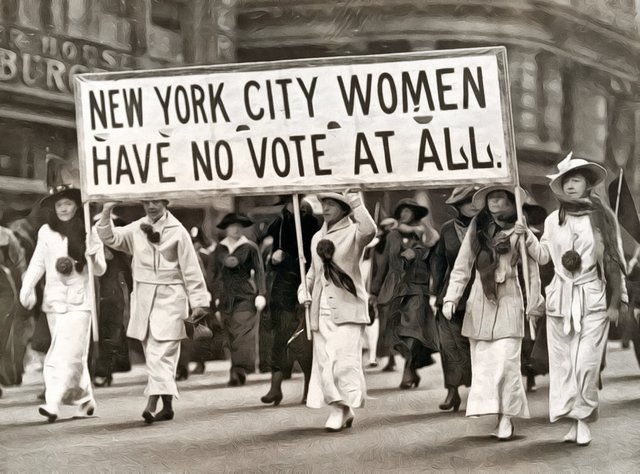
The artists Juliet Thompson and “Daisy” Pumpelly Smyth were both born in 1873 into a transformative age. Nearly every facet of life was experiencing revolutionary changes in the 19th century. Railroads, steamships, the telegraph, industrialization, along with the birth of radios, automobiles, telephones, and airplanes – modern life was being revolutionized.
Women in the industrialized nations were also beginning to advocate for their rights. Juliet and Daisy set their sights even higher, they were working for a spiritual transformation of the planet. Writing in the magazine “The Art World” in March, 1917, Juliet explained that this also extended to art:
“Great art is not merely an intellectual product. It is not slavist imitation or the mere “copying of sections of nature” or sections of external personality. Great art belongs to the transcendent realm of spiritual vision and spiritual emotion, and is an expression of the apprehension of divine beauty and inner significance. We have lingered too long on the threshold of mere physical Beauty, making mere heavy reproductions of its outer aspect.”
link to her original article
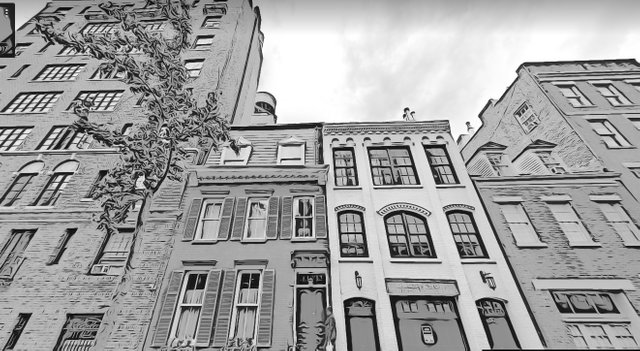 The house with two upstairs windows.
The house with two upstairs windows.
For many years Juliet and Daisy shared this small Greenwich Village home at 48 West 10th Street in New York City. By all accounts Juliet had a magnetic personality and radiated an inner beauty that drew people to her. Their house was a meeting place for artists and people of many nationalities and races, including their neighbor from across the street, Khalil Gibran. Initially this post was going to be about Khalil Gibran and his friendship with Juliet, but after a deep dive I was intrigued by Juliet and Daisy and decided to first write about them.
Juliet Thompson grew up in Washington DC and came from a prominent family, her father was a close friend of Abraham Lincoln. She was in the social register and she attended the Corcoran School of the Arts and Design. Her father died when she was only 12, and the family was no longer financially well situated, fortunately at this point she was already selling paintings. Eventually she would go on to paint First Lady Grace Coolidge.
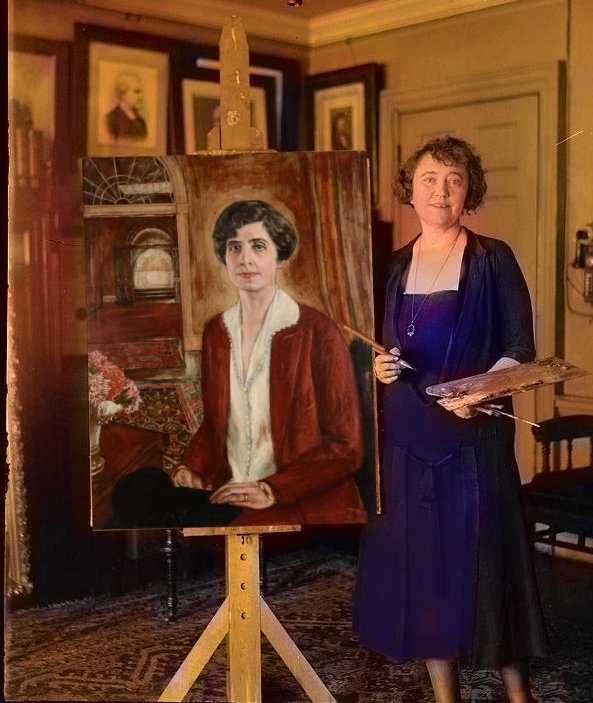
My slightly colorized version of the 1927 original with a photo of the actual portrait replacing the original b/w.
She first learned of the Baha'i Faith from her friend Laura Dreyfus-Barney, and became a Baha'i in 1901 while she was in Paris at the invitation of Laura's mother Alice Pike Barney.
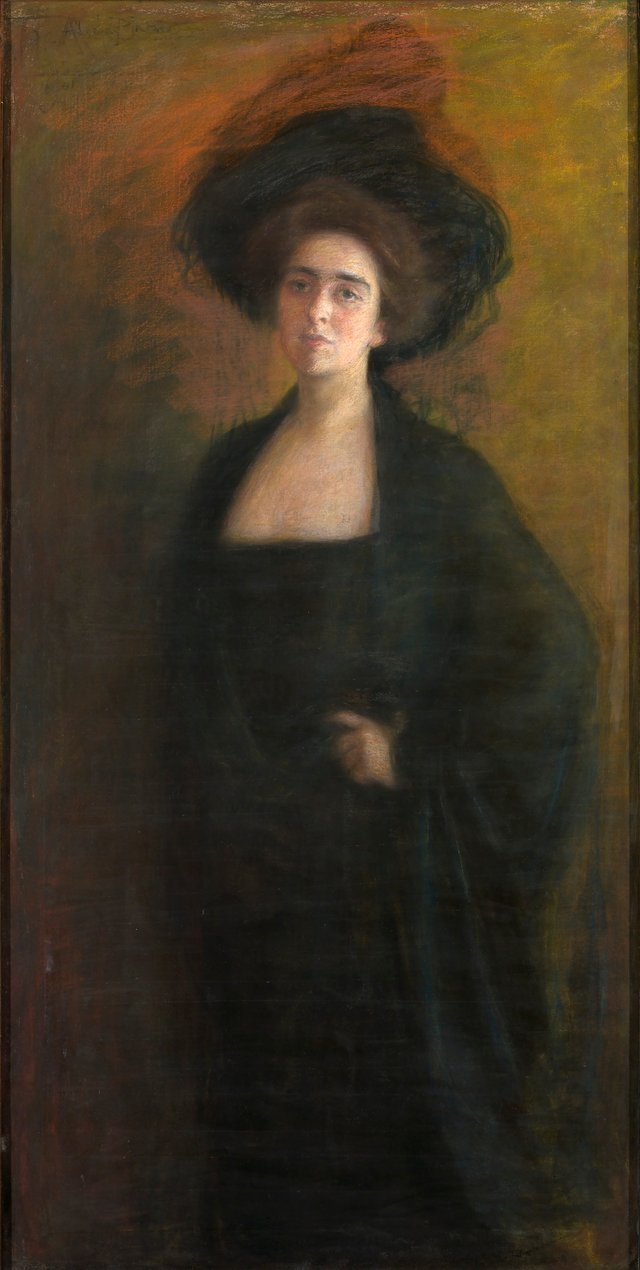
Above Laura Dreyfus-Barney by Juliet Thompson / Smithsonian American Art Museum
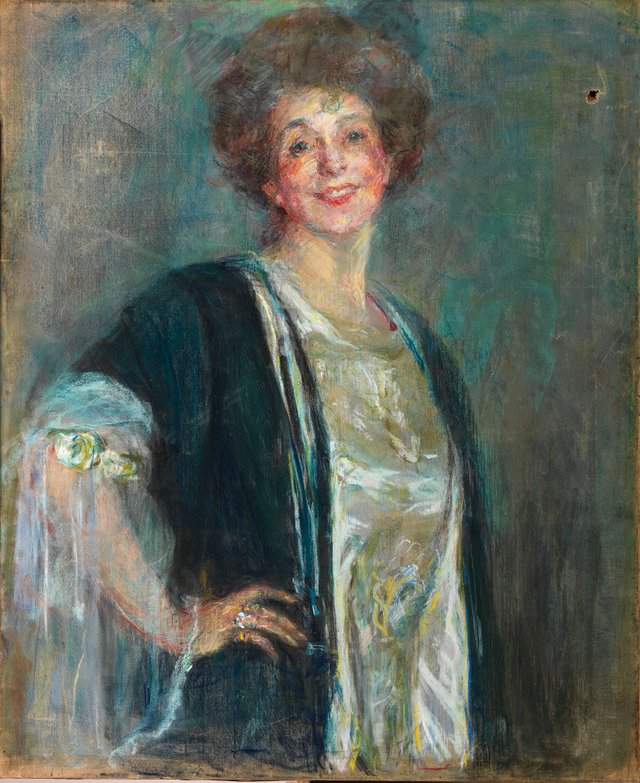
Above Alice Pike Barney by Juliet Thompson / Smithsonian American Art Museum
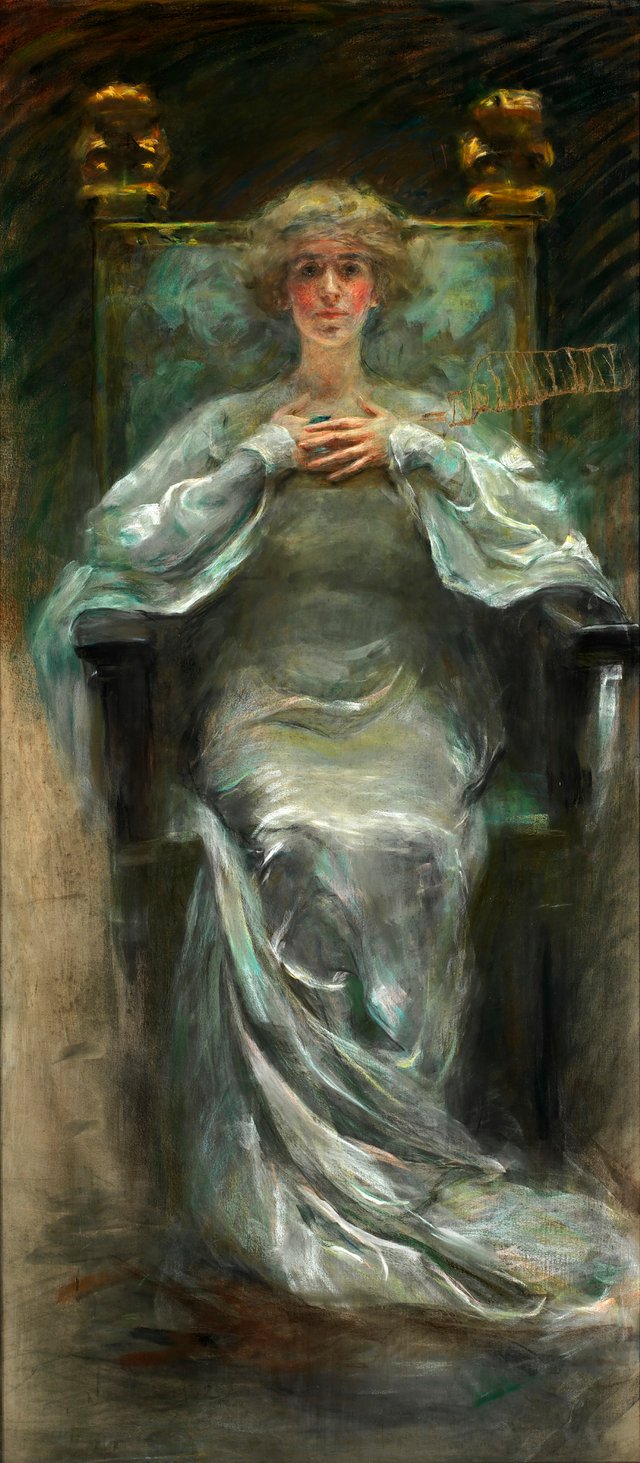
Above "Woman in White" by Juliet Thompson / Smithsonian American Art Museum
Juliet, like Khlil Gibran, was also drawn to the written word. Her diary, with an account of her early Baha'i pilgrimage to the Holy Lands in 1909 and her recollections of Abdu'l-Baha (a central figure in the Baha'i Faith,) is a widely read book in Baha'i circles. It is available online here
She also wrote a short but enjoyable novel entitled, “I, Mary Magdalene” with a foreword written by her friend and fellow Baha'i Daisy:
Foreword to “I, Mary Magdalene”
In Juliet Thompson's vivid and subtle word painting — which transcends and unifies the diverse media of expression — poetry and the arts become one. The illustrations — visions discerned in an ethereal realm — strikingly portray ancient races and times.
As pilgrims we journeyed together to the Holy Land — first to Carmel, that Mountain of the Lord, to meet Shoghi Effendi; to the shrines of the Báb and `Abdu'l-Bahá; to 'Akká, the scene of the long imprisonment of Bahá'u'lláh and his son, and to Bahá'u'lláh's shrine and tomb at Bahjí.
So sensitive was the author-artist to the vibrations that emanate from the spots which have been frequented by the Holy Messengers and Martyrs, that she was irresistibly drawn to an obscure path that led to a small dome-shaped dwelling, and I recall poignantly her joy when she learned from a peasant that it was the traditional site of the home of Mary of Magdala.
Perusing this book one is carried back two thousand years, into the soul and consciousness of Mary, the Magdalen — into that flaming heart of the archetypal woman of all cycles, vessel created to receive in torrential measure the love of her Lord — a link between His heart and all aspiring humanity.
This is, in very truth, the age-long drama at its apogee of the evolving soul emerging from the prison of the lesser love, through the fiery crucible of agony, to the freedom and ecstasy of love divine. — Marguerite "Daisy" Pumpelly Smyth
You can read it online here
Daisy
Daisy was from an old and prominent Boston family, with a vacation home in Dublin, New Hampshire. She studied with Abbott Thayer in New Hampshire and continued her studies in Europe. Daisy was married and had four children, but was an independent and thoroughly modern woman.
Here is a painting by Daisy when she was 17. The subject is her 18 year old friend, and fellow artist, Rose Standish Nichols. Daisy seems to have captured a sense of strong-willed independence in her friend's countenance – Rose also became a Baha'i.
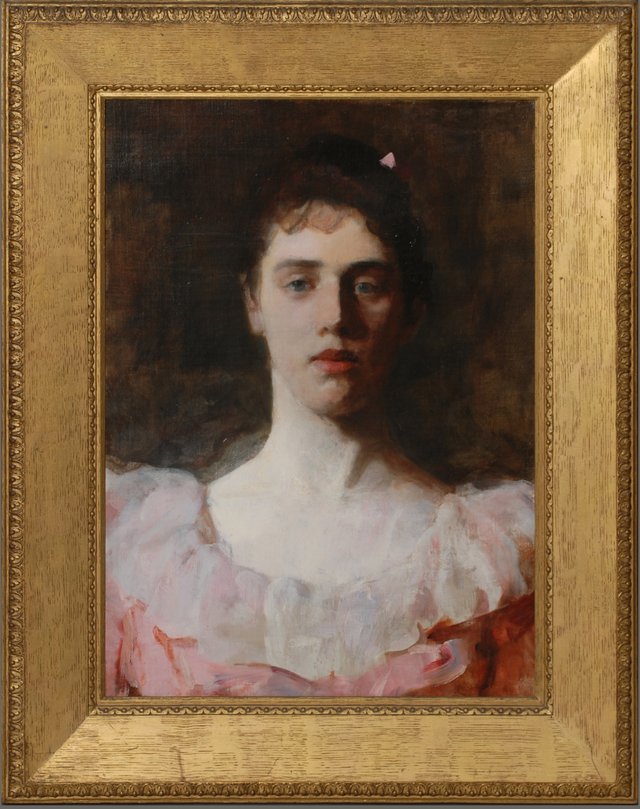
Rose Standish Nichols, from the Nichols House Museum
Here is a link to another portrait by Daisy
Julie & Daisy's Greenwich Village Home
Abdu'l-Baha, born 1844 in Persia, was the son of the founder of the Baha'i Faith and the exemplar and authorized interpreter of his father's writings. From the age of eight until the age of 64 he was exiled and imprisoned. He was freed as a result of the Young Turk Revolution. Thereafter he traveled to Europe and America to visit the burgeoning Baha'i communities there and to spread his father's teachings. He spoke in a variety of venues such as churches, universities, and even the homes of Baha'i's. He spoke in Julie and Daisy's home on November 15, 1912 in this room.
You can read his full talk here, but here a few quotes which will give you an overview:
First among the great principles revealed by Him is that of the investigation of reality. The meaning is that every individual member of humankind is exhorted and commanded to set aside superstitious beliefs, traditions and blind imitation of ancestral forms in religion and investigate reality for himself. Inasmuch as the fundamental reality is one, all religions and nations of the world will become one through investigation of reality.
A second characteristic principle of the teachings of Bahá'u'lláh is that which commands recognition of the oneness of the world of humanity. Addressing all mankind, He says, "Ye are all the leaves of one tree." There are no differences or distinctions of race among you in the sight of God.
… religion must be in conformity with science and reason. If belief and teaching are opposed to the analysis of reason and principles of science, they are not worthy of acceptance.
religion must be the source of unity and fellowship in the world. If it is productive of enmity, hatred and bigotry, the absence of religion would be preferable.
... all forms of prejudice among mankind must be abandoned and that until existing prejudices are entirely removed, the world of humanity will not and cannot attain peace, prosperity and composure.
Another teaching is that there shall be perfect equality between men and women. Why should man create a distinction which God does not recognize?
… the necessity for a universal language which shall serve as a means of international communication and thus remove misunderstandings and difficulties.
He has also proclaimed the principle that all mankind shall be educated and that no illiteracy be allowed to remain.
In the next post I will return to the friendship between Juliet and Khalil Gibran and their interaction with Abdu'l-Baha.
Photo of Daisy and Juliet later in life – they lived into their 80s and passed away respectively in 1959 and 1956.
Photos
Noted on photos except:
Lead photo is an historical photo from National Geographic with effects by @roused
Photo of Juliet's house is from google maps with effects by @roused
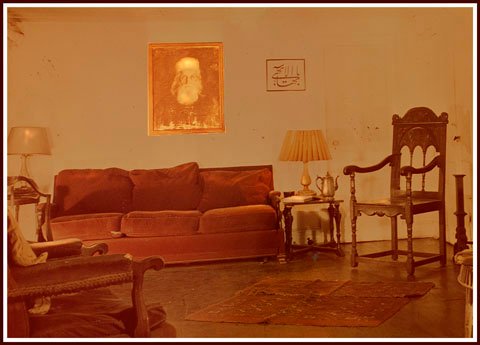

It is like an early version of the 68 generations fascination with Indian religion. The Rebellion of the Youth in the 1960s was just a remake really. The real change happened around WWi.
That's a fun way to think of it, although my take on it is somewhat different.
The 19th century seemed to have been influenced by a powerful shift in our collective consciousness. Think of the music of Claude Debussy or Maurice Ravel, or the art of Vincent van Gogh, Renoir, Monet and many more, the breakthroughs in science, modern psychology, technology, development of Esperanto, and so much more. That was a monumental time and these ladies were in the thick of it :-)
There is of course not a thing as the time real change happened, and I agree that modernism started in the late nineteenth century. My remark was mainly (I guess) a slight satire over my parents generation who still think of themselves as the greatest game changers ever while really just being epigones of the early moderninsts :)
;-) I knew you meant it that way.
That's another discussion, but if you look at the music of the 60s, not just rock, but soul, country, jazz, R&B, Bosa Nova etc, it was indeed a magical time.
link
link
link
link
link
link
Sheer bliss!
This post was shared in the Curation Collective Discord community for curators, and upvoted and resteemed by the @c-squared community account after manual review.
@c-squared runs a community witness. Please consider using one of your witness votes on us here
With all the content out there, I'm glad you happened upon my post. Thanks for your support and your curation efforts!
The first time is important...whatever it is you're doing!